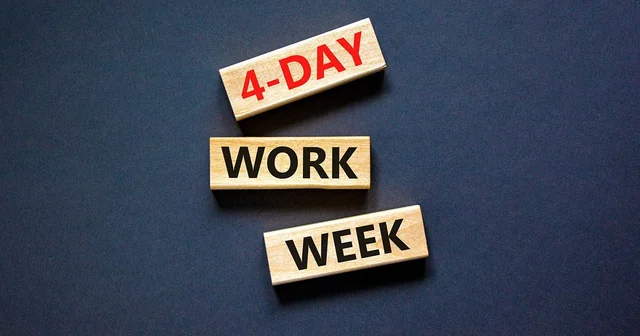The idea of a four-day work week is no longer just a dream for employees or a radical idea pushed by productivity experts. It is fast becoming a global conversation that is reshaping how we look at work, stress, and health. Recent studies and real-world trials show that cutting one day from the traditional five-day workweek may lead to lower burnout, better health, and improved social wellbeing—without sacrificing productivity.
In this article, we explore how the four-day work week is gaining ground, the science behind its benefits, and what it could mean for the future of work.
What Is a Four-Day Work Week?
A four-day work week means employees work four days instead of five, usually without a pay cut. The most popular model involves 32 working hours across four days, instead of the typical 40-hour schedule spread over five. Some companies choose to reduce working hours, while others keep hours the same but compress them into fewer days.
Though different organizations adopt the model in various ways, the goal remains the same: increase work-life balance, reduce stress, and maintain or even boost productivity.
The Link Between Work and Burnout
What Is Burnout?
Burnout is a state of emotional, mental, and often physical exhaustion caused by long-term, excessive stress. It can lead to:
- Fatigue and lack of motivation
- Anxiety and depression
- Poor performance and disengagement
- Physical symptoms like headaches, digestive issues, or sleep problems
Burnout doesn’t just harm individual employees; it also affects the organization through higher turnover, lower engagement, and increased sick leaves.
The Evidence: Four-Day Work Week Reduces Burnout
A 2022 global trial, run by the non-profit 4 Day Week Global, included 61 companies across the UK, involving nearly 3,000 workers. After six months of operating on a four-day schedule, the results were impressive:
- 71% of employees reported lower levels of burnout
- 39% said they were less stressed
- 54% experienced fewer negative emotions
- Companies reported a productivity level of 98%, meaning performance remained strong even with fewer work hours
These figures show a direct connection between shorter workweeks and better employee wellbeing.
How a Four-Day Work Week Supports Health

Reducing the number of days worked leads to more free time—and that extra time makes a huge difference.
Physical Health Improvements
Many employees use the extra day for activities they wouldn’t otherwise make time for:
- Exercise and gym sessions
- Preparing healthier meals
- Going for regular check-ups and appointments
- Getting better sleep
In the UK trial mentioned earlier, participants reported fewer sleep issues, less chronic pain, and more energy.
Mental Health Benefits
Mental health gains were also noticeable. With more time to rest, engage in hobbies, and connect with loved ones, employees felt less anxious and more in control of their lives.
In Iceland, where a four-day work week trial was conducted between 2015 and 2019 for 2,500 workers, results showed dramatic reductions in stress and improved work-life balance.
Social Wellbeing: More Than Just Free Time
A surprising but important benefit of the four-day work week is social wellbeing. When people are not constantly tired or rushing between work and personal duties, they can be more present with their families, communities, and friends.
Better Relationships
Extra time off allows people to:
- Attend their children’s school events
- Plan family activities or vacations
- Spend quality time with partners
- Engage in social or volunteer work
Community Engagement
Having more time can also result in greater community involvement, whether through volunteering, local events, or simply being active members of a neighborhood.
Does Productivity Suffer?
One of the biggest concerns employers have is that working fewer hours might lead to lower output. But in nearly every trial so far, the opposite has happened.
Efficiency Over Time
When given a shorter timeframe, workers tend to:
- Limit distractions (less time on emails or meetings)
- Focus on tasks that matter most
- Collaborate better
- Feel more motivated and energized
Microsoft Japan tested a four-day work week in 2019 and reported a 40% boost in productivity.
Companies like Buffer, Perpetual Guardian (New Zealand), and Unilever have also adopted the model, with positive results across engagement and output.
Environmental Impact
A four-day work week doesn’t just help individuals—it can benefit the planet, too. Fewer commutes mean lower carbon emissions. Offices use less energy. And a workforce that travels less for work contributes to reduced environmental footprints.
In the UK trial, a single company reported that their car mileage dropped by 20%, contributing to less traffic and pollution.
Challenges and Considerations
Of course, not every industry or job can immediately adopt a four-day model. Sectors like healthcare, customer service, and retail often need staffing around the clock.
Potential Challenges:
- Coverage issues: Customers or clients may expect service five or seven days a week.
- Uneven workloads: Compressing 40 hours into four days may not reduce stress.
- Inequality concerns: Low-wage workers or hourly employees may be left out.
- Cultural resistance: Some companies still value “face time” over outcomes.
How Companies Can Make It Work
Here are a few key takeaways from successful trials that businesses should consider:
1. Focus on Output, Not Hours
Shift the focus from how long people work to what they achieve.
2. Cut Unnecessary Meetings
Many companies in trials reduced meeting times or replaced them with written updates.
3. Automate and Streamline Tasks
Use tech tools to cut down repetitive tasks and free up time.
4. Involve Employees in the Process
Let teams design how the new work model would look. Their buy-in is crucial.
5. Trial First, Then Scale
Start with a pilot program—a few teams or departments—and track results before expanding.
The Future of Work Is Flexible
The pandemic forced the world to rethink work. Remote jobs, flexible hours, and mental health support became top priorities. The four-day work week seems like a natural next step.
More countries, including Germany, Spain, and Ireland, are either running or considering national-level pilots of the model. Tech giants, startups, and even traditional firms are exploring this shift.
Final Thoughts
The four-day work week is more than a perk—it’s a movement toward better health, less burnout, and stronger societies. The data shows that when companies trust their employees, give them time to rest, and value results over hours, everyone wins.
Yes, it requires thoughtful planning and may not be one-size-fits-all. But for many organizations, it offers a clear path to happier employees, healthier teams, and a more sustainable way of working.
The four-day work week isn’t just about working less. It’s about living more.
Do Follow On Instagram.
Read Next – Top Social Issues for Nonprofits in 2025: Access, Mental Health & Basic Needs






